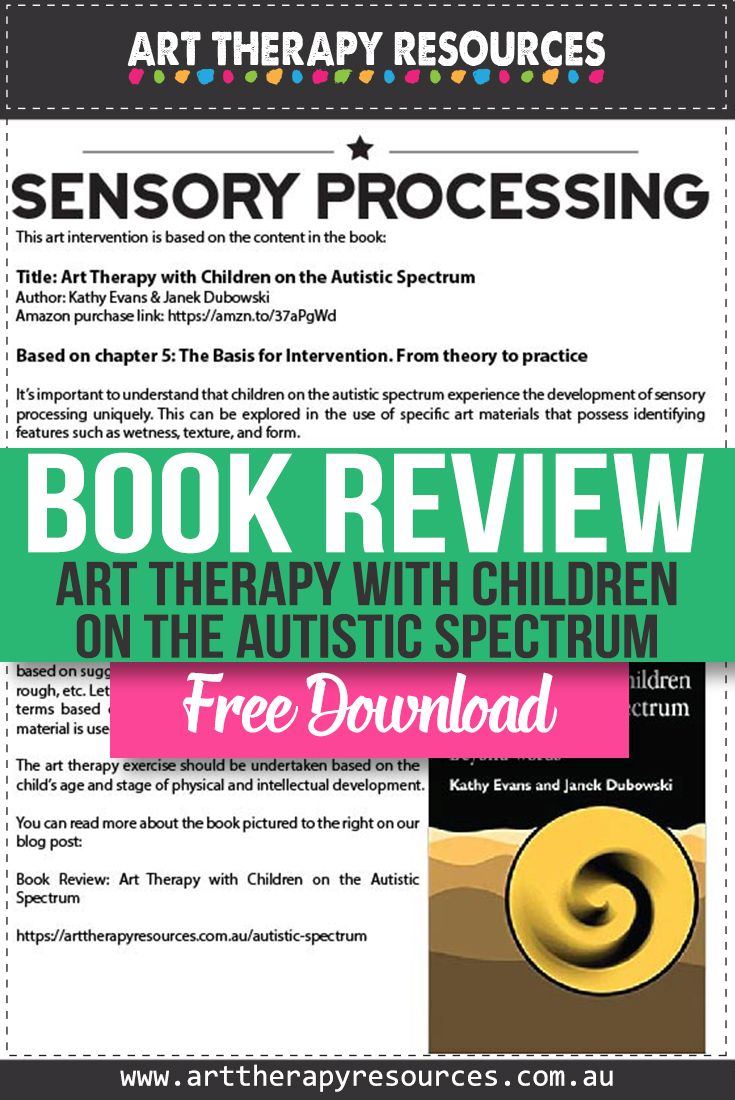THIS POST INCLUDES:
1. Art Therapy with Children on the Autistic Spectrum
2. The book review
3. FREE Download
Art Therapy with Children on the Autistic Spectrum
Author: Kathy Evans & Janek Dubowski
Date published: 2001
Page length: 113
Amazon purchase link: Art Therapy with Children on the Autistic Spectrum
Goodreads link: Art Therapy with Children on the Autistic Spectrum
ABOUT THE BOOK
Recent research has shown that art therapy can be particularly effective for children with autism and related communication disorders. The extensive range of symptoms experienced by autistic people makes them extremely individual in presentation, so any treatment used must be tailored to a range of varying needs.
Art Therapy with Children on the Autistic Spectrum presents a new model of practice, which primarily focuses on communication difficulties. The authors describe how negative behaviours and subsequent tension may be alleviated when the autistic child is involved in interactive art making with the therapist.
The book is divided into three parts: the first part explores art making processes and art work, with an emphasis on how art can be specifically communicative.
A history of autism is presented within the therapeutic context. The second part challenges existing methods of practice within art therapy and considers the most appropriate approaches to treating autistic children. The last part discusses research that lead to the formulation of this specific model – methodology and assessment interventions are analysed, as well as the ongoing development of appropriate assessment instruments.
Case studies of art therapy with individual autistic children demonstrate the use of the model and the outcomes. Throughout the book, it is emphasised how art therapy works as an integral part of overall management and treatment approaches to autism.
It will be of particular interest to all those professionals working with autistic children and specialists in other communication disorders.
Book Content:
1 Developmental Deficit: Communication and imagination
2 Imaginative Play, Creativity and Art
3 Drawing Development
4 Symbols, Signs, Theory of Mind, Autism and Drawing Development
5 The Basis for Intervention: From theory to practice
6 Diagnosis, Understanding and Assessment
7 Working with Stephen
8 Developing an Interactive Art Therapy Template
The book helps art therapists develop a deeper understanding of working with clients on the autism spectrum.
The book explores the common behavioural aspects of autism along with a pathway on how art therapists can develop art interventions as well as develop support for clinicians and clients.
Art Therapy with Children on the Autistic Spectrum begins with a foundational understanding of childhood development and seeks to help art therapists understand the behavioural differences that may occur in clients along the autism spectrum. This includes common differences in communication and childhood imagination.
The book follows the important premise that the benefits of art making can be found in the process of art making instead of seeking to understand the final image itself.
The act of making art is an important process in developing communication skills and aspects of imagination.
ART THERAPY EXERCISE
Based on chapter 5: The Basis for Intervention. From theory to practice
It’s important to understand that children on the autistic spectrum experience the development of sensory processing uniquely. This can be explored in the use of specific art materials that possess identifying features such as wetness, texture, and form.
As an art therapist, we can help the client explore the various sensory aspects of art materials to develop a vocabulary with the child. Exploring these new sensory aspects can also help the therapeutic relationship between therapist and client through the shared experience of exploration and new discoveries.
SUGGESTED EXERCISE:
A helpful art therapy exercise to undertake with your client is to introduce new art materials.
Identify and explore the differences in the sensory aspects of each art material.
Alternatively, you can guide your client to choose art materials based on suggested terms of wet, dry, sharp, smooth, bumpy, rough, etc.
Let your client express their interpretation of these terms based on the art material chosen and how the art material is used.
The art therapy exercise should be undertaken based on the child’s age and stage of physical and intellectual development.
FREE DOWNLOAD: Art Therapy Exercise
SIGN UP below to download the FREE Art Exercise for Sensory Processing

BUILD YOUR ART THERAPY REFERENCE MATERIALS:
Pin this image to your Pinterest board.

SHARE KNOWLEDGE & PASS IT ON:
If you’ve enjoyed this post, please share it on Facebook, Twitter, Pinterest. Thank you!

